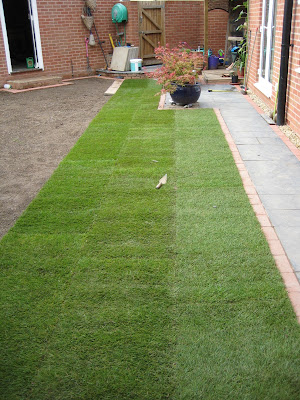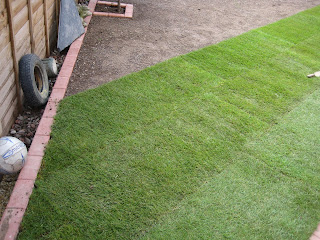THE OLD LAWN


First things first dig up old lawn I did hire a turf remover but ended up doing most of it by hand. Well I know for next time.

The ground was 12 inches to high toward the garage and 3 inches to low the other end so I needed to remove about a ton of earth.

We packed 96 bags of stones and old turf
I made a riddle three feet by four feet out of 3 x 2 and chicken wire then set it at 45 degrees and made a ramp to wheel barrow the soil in at the top.
My master plan was to dig out all the soil and riddle out the stones,this would reduce the amount of good soil going to waste and give me high quality topsoil for my nice new turf.

We then spent several days rolling and raking to get it truly level.


A drum of chicken manure to spread before laying the turf.

Finally it was ready for the turf. I ordered 52 square meters for the coming weekend.

Lush quality and three feet wide easy to lay. Using the scaffold plank to keep the rolls straight.





The finished item level and green.
I had to include my nine feet sunflower Berty.
































